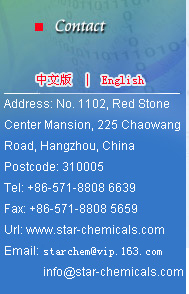FR-NP430 (Halogen-free intumescent)
Product Description: FR-NP430 is a newly developed halogen free environmentally friendly flame retardant based on phosphorus and nitrogen synergism (not APP series). The product differs in its mode of action from chlorine or bromine containing flame retardants by achieving its effect through intumescence. The thermoplastic material foams on exposure to flame, the carbon foam layer so formed protects the polymer through its heat-insulating effect, reduces further oxygen access and prevents dripping of the thermoplastic. FR-NP430 was developed especially for use in polyolefin and thermoplastic elastomer. It is suited for PP, PE, LDPE, HDPE, EVA, TPE, TPU, TPO, SEBS, PPO, EPDM for injection moulding and extrusion applications. FR-NP430 show an excellent flame retardancy with low amount of flame retardants, when incorporated into thermoplastics, it shows good processing stability and non-hydroscopic. FR-NP430 does not contain heavy metal Pb, Hg, Cd, Cr6+, polybrominated biphenyls or polybrominated diphenyl ethers. It is compliant with the requirements.of RoHS & WEEE, REACH Directive and halogen-free specification IEC 61249-2-21.
Performance Benefits:
·Excellent flame retardancy-UL94 V-O at 1.6 mm in polypropylene below 20% loadings with 0.2% polytetrafluoroethylene (PTFE)
·Very low smoke release; low smoke density; very low CO & CO2 emissions
·Low heat release; no corrosive gaseous products.
·Homogeneous carbon layer with closed cell structure.
·Enables the compounding of Flame Retardant polyolefin with low density, high elongation and high impact strength.
·Very low water solubility, non-hydroscopic; improved resistance against water extraction.
·Good thermal stability (wide processing window), it can be process at 220°C.
·Can be available with appropriate hindered amine light stabilizers (HALS), unlike bromine-type flame retardants.
·Less heat discolorations.
·Significantly lower loading compared Al-trihydrate and Mg-hydroxide.
·Lower loading in comparison to conventional ammonium polyphosphates.
Typical properties:
| Appearance |
White powder |
| Phosphorus content |
17-22% |
| Particle size, D50 (mm) |
8 |
| Water content |
0.5% max. |
| Density, g/cm3 |
1.2 |
| Bulk density, g/cm3 |
0.5-0.6 |
| Decomposition (5%, N2) |
>280°C |
Packing: net 25 kg bag

